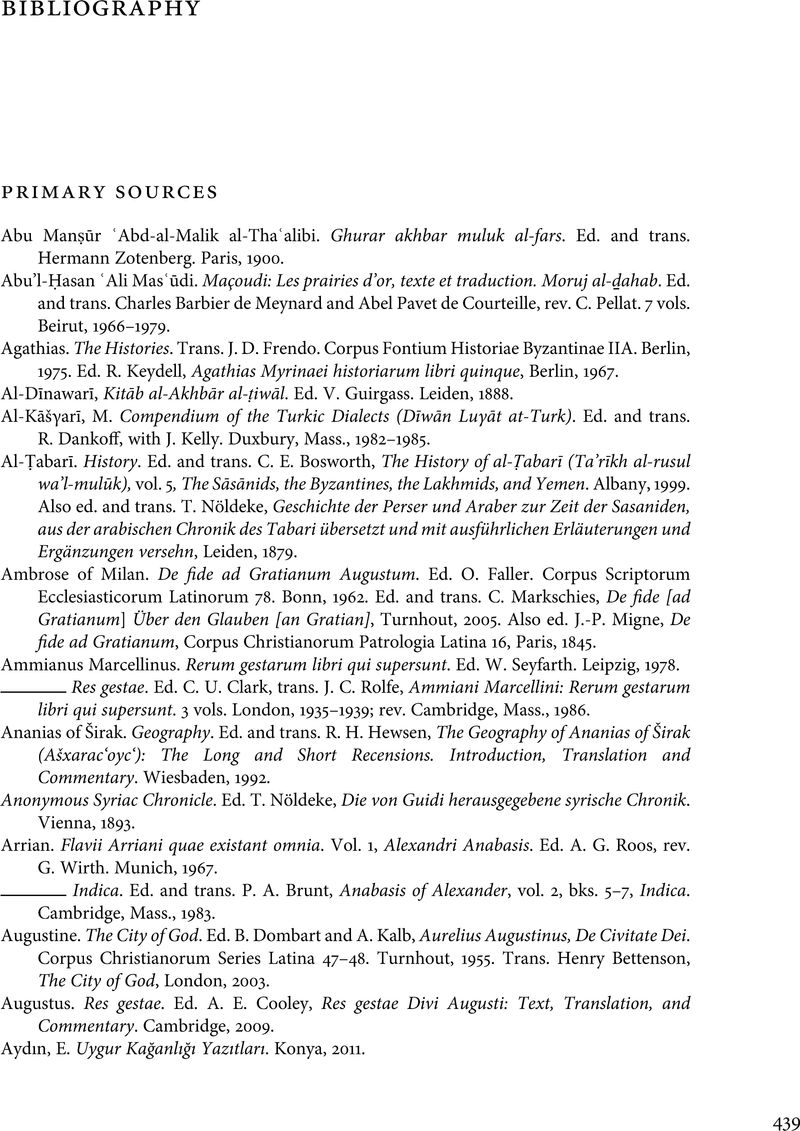Book contents
- Empires and Exchanges in Eurasian Late Antiquity
- Empires and Exchanges in Eurasian Late Antiquity
- Copyright page
- Dedication
- Contents
- Maps and Figures
- Contributors
- Preface and Acknowledgments
- Abbreviations
- Maps
- Introduction
- Part I Historical Thresholds
- Part II Movements, Contacts, and Exchanges
- Part III Empires, Diplomacy, and Frontiers
- Epilogue
- Glossary of Chinese Terms
- Bibliography
- Index
- References
Bibliography
Published online by Cambridge University Press: 13 April 2018
- Empires and Exchanges in Eurasian Late Antiquity
- Empires and Exchanges in Eurasian Late Antiquity
- Copyright page
- Dedication
- Contents
- Maps and Figures
- Contributors
- Preface and Acknowledgments
- Abbreviations
- Maps
- Introduction
- Part I Historical Thresholds
- Part II Movements, Contacts, and Exchanges
- Part III Empires, Diplomacy, and Frontiers
- Epilogue
- Glossary of Chinese Terms
- Bibliography
- Index
- References
Summary

- Type
- Chapter
- Information
- Empires and Exchanges in Eurasian Late AntiquityRome, China, Iran, and the Steppe, ca. 250–750, pp. 439 - 486Publisher: Cambridge University PressPrint publication year: 2018



